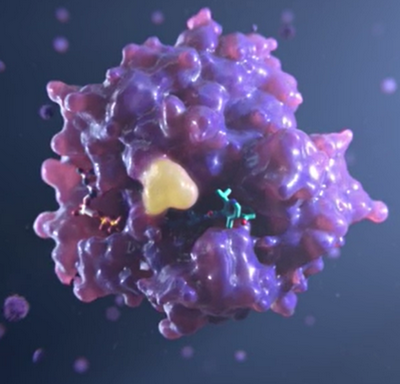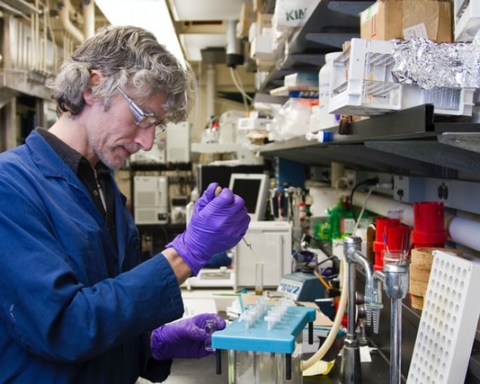UNSW chemical engineers have synthesised a new iron oxide nanoparticle that delivers cancer drugs to cells while simultaneously monitoring the drug release in real time.
[wp_ad_camp_4]The result, published online in the journal ACS Nano, represents an important development for the emerging field of theranostics – a term that refers to nanoparticles that can treat and diagnose disease.
“Iron oxide nanoparticles that can track drug delivery will provide the possibility to adapt treatments for individual patients,” says Associate Professor Cyrille Boyer from the UNSW School of Chemical Engineering.
By understanding how the cancer drug is released and its effect on the cells and surrounding tissue, doctors can adjust doses to achieve the best result.
Importantly, Boyer and his team demonstrated for the first time the use of a technique called fluorescence lifetime imaging to monitor the drug release inside a line of lung cancer cells.
“Usually, the drug release is determined using model experiments on the lab bench, but not in the cells,” says Boyer. “This is significant as it allows us to determine the kinetic movement of drug release in a true biological environment.”
Magnetic iron oxide nanoparticles have been studied widely because of their applications as contrast agents in magnetic resonance imaging, or MRI. Several recent studies have explored the possibility of equipping these contrast agents with drugs.
However, there are limited studies describing how to load chemotherapy drugs onto the surface of magnetic iron oxide nanoparticles, and no studies that have effectively proven that these drugs can be delivered inside the cell. This has only been inferred.
With this latest study, the UNSW researchers engineered a new way of loading the drugs onto the nanoparticle’s polymer surface, and demonstrated for the first time that the particles are delivering their drug inside the cells.
“This is very important because it shows that bench chemistry is working inside the cells,” says Boyer. “The next step in the research is to move to in-vivo applications.” [UNSW NewsRoom]








